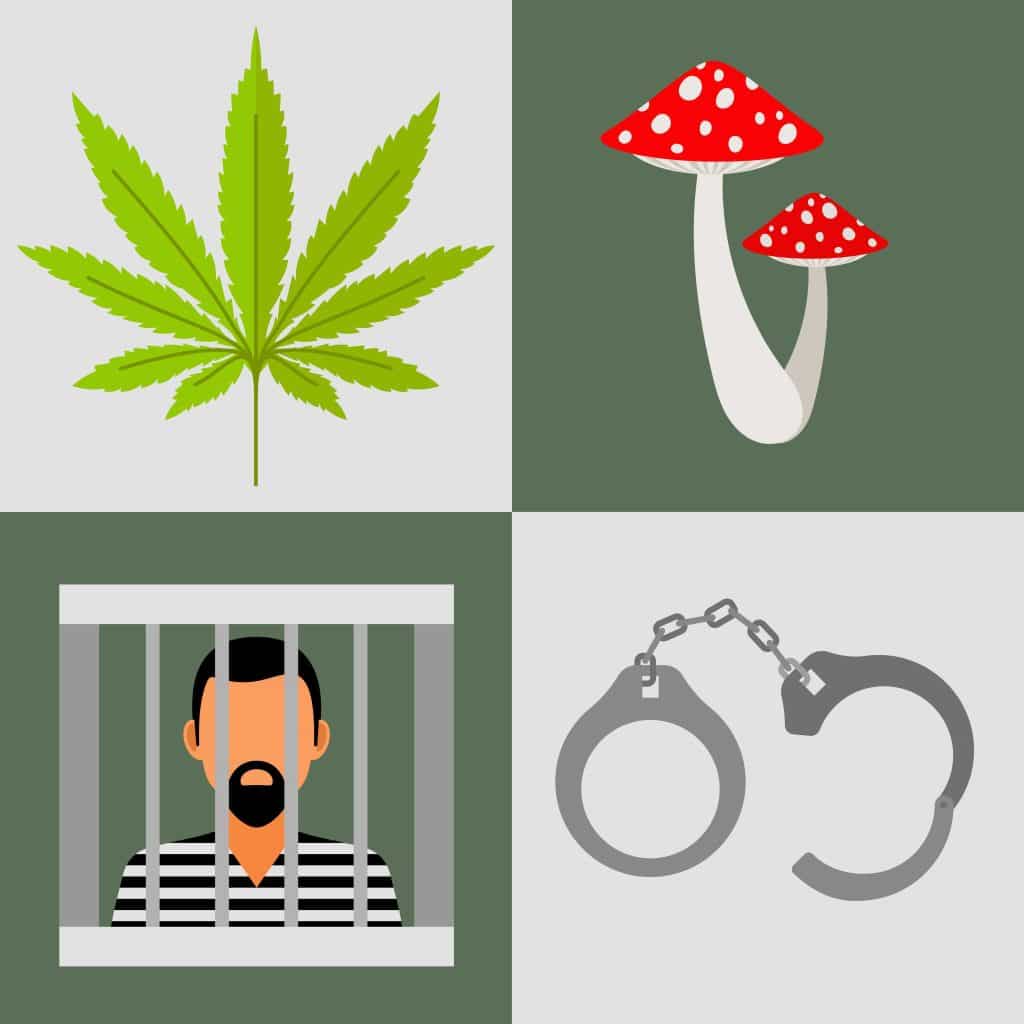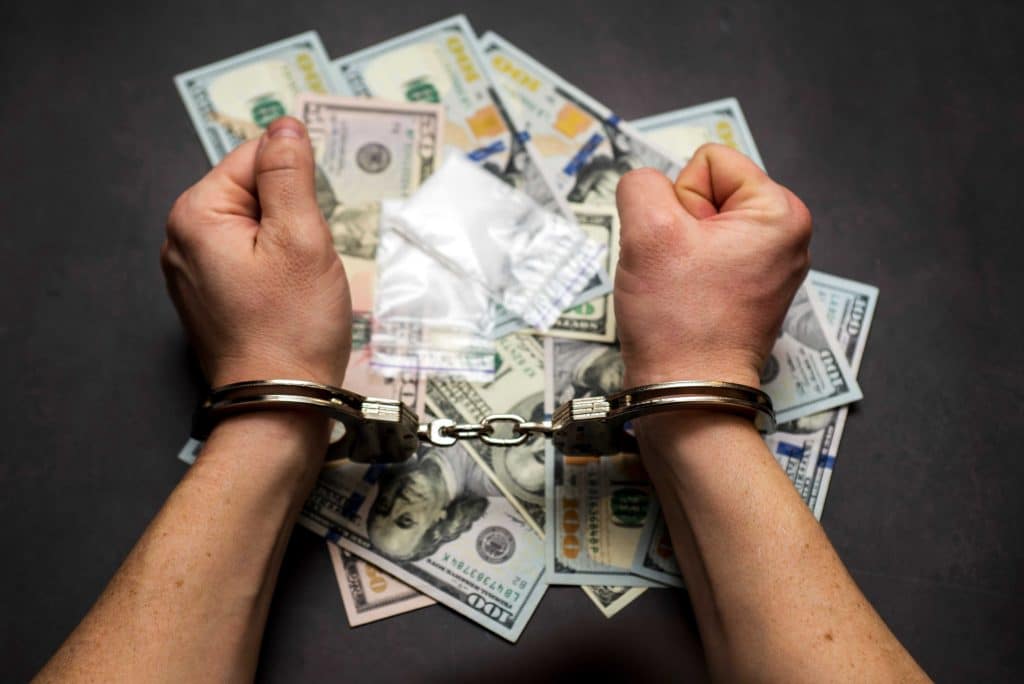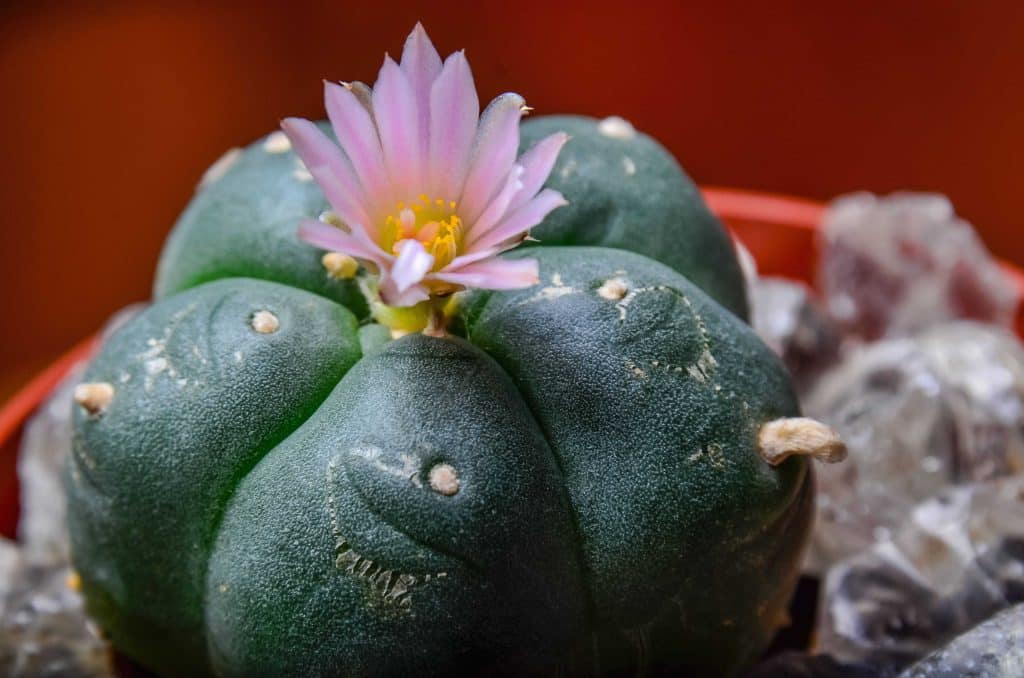It’s fun to do a little law-breaking sometimes, especially when the laws in question don’t make much sense. But getting caught isn’t any fun, and when it involves drugs, there can be large, sometimes way-more-than-necessary consequences to deal with. Recently I went over the cost of getting caught with weed. Today, let’s look at the cost of getting caught with psychedelics.
Thanks for making your way over. Subscribe to our Cannadelics Weekly Newsletter for regular updates straight to your email, along with great deals on awesome merch including marijuana flowers, vapes, edibles, smoking devices, and cannabinoid compounds. Check through the options, and pick what works best for you!
Is it just one cost?
First, I want to make one thing clear, we are only talking about psychedelics right now. ‘Psychedelics’ are a grouping under the term ‘hallucinogens,’ and though the term has recently been used to include drugs like ketamine, PCP, salvia, amanita mushrooms, and MDMA, these are not actually classified as psychedelics. What they all provide, is an ability for hallucinations, but that creates a much wider category that involves way too many drugs to get into right now.
For the sake of not having this go off the rails, I’m limiting this question to classic psychedelics, which include LSD, psilocybin, DMT, and mescaline, and which are technically the only drugs under the ‘psychedelics’ category. For all intents and purposes, we can include MDMA since it’s so often seen as a psychedelic. I’m only getting into simple possession of these drugs, since that’s the majority of what people reading this article, will face. All five of the drugs mentioned are Schedule I, meaning they are all lumped together legally in terms of the federal government.
The cost of getting caught with psychedelics can vary by location. That’s because of states’ rights, which means different states have their own legal policies for dealing with just about everything, including drugs. So, what counts as one thing in one state, might count as something else entirely in another. And the penalties in one state can be vastly different from those in another. If you’re caught by a state agency, the cost of getting caught with psychedelics is determined by that state’s government.

On the other hand, the federal government has its own policies. When it comes to psychedelics, according to the federal government, they’re all Schedule I controlled substances, deemed dangerous, and without any benefit, medical or otherwise. As a reiteration, since I’m not including dissociative hallucinogens, drugs like ketamine and DXM aren’t included, though these are considered non-classic psychedelics, along with salvia, ibogaine, and even THC.
The last thing to consider is that there are several different psychedelics, and they don’t have to be regulated the same way. In fact, there’s a good reason why they sometimes aren’t on a state level. Some, like DMT and mescaline, are naturally produced by different plants. While others like LSD and MDMA are solely made in a lab. Any location that makes an allowance for ‘entheogenic’ plants, for example, is speaking only of naturally occurring, while ruling out synthetic drugs. This point is relevant to state laws, since the federal government holds all psychedelics as illegal.
The federal cost of getting caught with psychedelics
Right now, all the classic psychedelics are Schedule I controlled substances, although mescaline-producing plants get a pass, which creates a loophole specific to that drug. We’ll get more into that later. Any mescaline outside of a plant is still subject to the same laws as other psychedelics. The following provisions relate to all controlled substances, and include far more than psychedelics, including cannabis as well.
First off, any simple possession of an illegal drug, is a misdemeanor crime. A misdemeanor is considered a less intense criminal act than the more serious felony charge. But is comes with higher penalties than something like an administrative infraction (petty crime). So its sort of in the middle on the general scale of how bad something is. A simple possession amount is considered:
“When someone has on his or her person, or available for his or her use, a small amount of an illegal substance for the purpose of consuming or using it but without the intent to sell or give it to anyone else.” This is important, as simple possession is ruled out if there is an intent to sell. Simple possession is often referred to as a ‘personal use’ amount.
According to the federal government, a misdemeanor charge can incur up to one year in prison, a minimum fine of $1,000, or both. However, that’s for a first offense. Once a person gets caught again, even a simple possession charge can become a felony simple possession charge, making this smaller crime, into one that incurs bigger penalties. To give an idea of how often this happens, consider that between 2008-2013 felony simple possession charges increased by 400%.

What’s the difference in penalties after the first offense? Second convictions incur a minimum sentence of 15 days and can go up to two years in prison, and come with a minimum fine of $2,500. Caught again after that? Now you’re looking at a minimum of 90 days behind bars that can go up to three years, and a minimum of $5,000 in fines. Bear in mind, we’re still only talking about personal use.
The OTHER costs of getting caught with psychedelics
So you got caught, and you had to submit to the above penalties. Oh, but wait, that’s not it when it comes to paying out. Don’t forget about civil penalties too. These are fines which are imposed as a form of restitution for doing something wrong. Since they’re seen as a form of compensation, they’re not considered a criminal penalty, and not a part of the standard penalty system. Which means one does not take the place of the other, and you can pay both. When it comes to simple possession of controlled substances, these penalties can go as high as $10,000. And these can be given when there is no criminal prosecution.
More? Really? Yup, there is. Beyond these fines, which can add exorbitant amounts onto an arrest situation, there’s more to consider. When a person is convicted of something like possession, they also might have to pony up the money for the cost of the investigation against them and prosecution fees. Yup, you might have to pay the legal fees of the other side if found guilty. And that’s on top of your own legal fees. And we’re still only talking about simple possession.
That has to be the end, right? I mean, there are some scary drugs out there, but lets remember that everything I’m saying pertains to weed, LSD, and mushrooms. Not only do all the fees and jail time provide a massive cost for getting caught with psychedelics, and other drugs, but there’s still one more thing to consider. Getting a federal drug conviction is like throwing a stone in a pool of water, and watching the waves ripple out.
Jail time, criminal fines, civil fines, personal legal fees, and opponent legal fees… And then there are more costs. Like the fact that it can also result in forfeiture of the property involved, like a car. That you might never be able to own a firearm. Or the possible inability for government help in the form of things like student loans or scholarships. These actions add that much more cost – financial and otherwise – to getting caught with something as simple (and non-life-threatening) as psychedelics.
What about the mescaline loophole?
There’s one great exception to the federal ban on psychedelics, though it has to be used properly in order to not incur penalties. It’s the mescaline loophole. Mescaline is a schedule I substance, so if you have a bag of pure, extracted mescaline, you’re looking at the same punishments as the other Schedule I substances we just went over. Although because of the following loophole, you might at least have a decent basis for an argument to get out of it. Right now that’s just theory though, so don’t assume it’d work.

The loophole is created because mescaline comes from plants, and those plants either aren’t regulated, or are legal for religious use all throughout the US. The unregulated plants are the San Pedro cactus and the Peruvian Torch cactus, both of which contain mescaline, and neither of which is mentioned in the Controlled Substances list. Meaning there are no laws for having, growing, buying, selling, or using these plants. So long as you’re not extracting the mescaline, and only enjoying it as part of the plant, you’re not breaking a law.
What did make it onto the Controlled Substances list, along with mescaline itself, is the Peyote cactus. But even that is perfectly legal when used for religious purposes. This was established by the American Indian Religious Freedom Act of 1978 that opened use of the plant to Native Americans for religious purposes by requiring government agencies to stay out of it. This was updated in 1991 to include any person looking to use the plant religiously. And it was updated again in 1994 to include harvest, possession, consumption, and cultivation of the plant.
So long as the mescaline you ingest is used while using the entire Peyote plant, and is done with a religious purpose, its legal. And if you want to consume San Pedro or Peruvian Torch, there’s no law stopping you at all. Just don’t take the mescaline out of the plant, if you don’t want a legal battle over it. I expect this could be fought for religious purposes, but no case law exists yet, so be wary.
This loophole doesn’t exist with magic mushrooms in the US, though other locations in the world can take advantage of the similar magic mushroom loophole. That loophole functions comparably in that sometimes the psilocybin in the mushrooms is a controlled substance, while the actual mushrooms are not. In the US, however, both the mushrooms and the compounds inside are schedule I, and without a parameter for religious use.
Conclusion
This guide is for what happens when caught federally with psychedelics. When it comes to states laws, and the cost of getting caught with psychedelics, the laws vary widely and are changing constantly. Oregon legalized some use; Colorado has a ballot measure to do the same this election, and already pre-emptively legalized MDMA; and tons of places have decriminalization measures and/or are working on legalizations. If you want to know penalties for your specific location, you’re best looking for the most recent legal updates.
For information on the cost of getting caught with weed by the federal government and different states, and for general arrest numbers, look here.
Hello and welcome readers! We appreciate you making it over to Cannadelics.com; where we work hard everyday to bring you fully-rounded coverage of the growing cannabis and psychedelics spectrum. Hang out with us regularly to keep up with everything going on, and sign up for the Cannadelics Weekly Newsletter, so you’re never late on getting a story.
The post The Cost of Getting Caught with Psychedelics appeared first on Cannadelics.
Via https://cannadelics.com/2022/11/01/the-cost-of-getting-caught-with-psychedelics/
source https://rosalinaklerkx.weebly.com/blog/the-cost-of-getting-caught-with-psychedelics
No comments:
Post a Comment